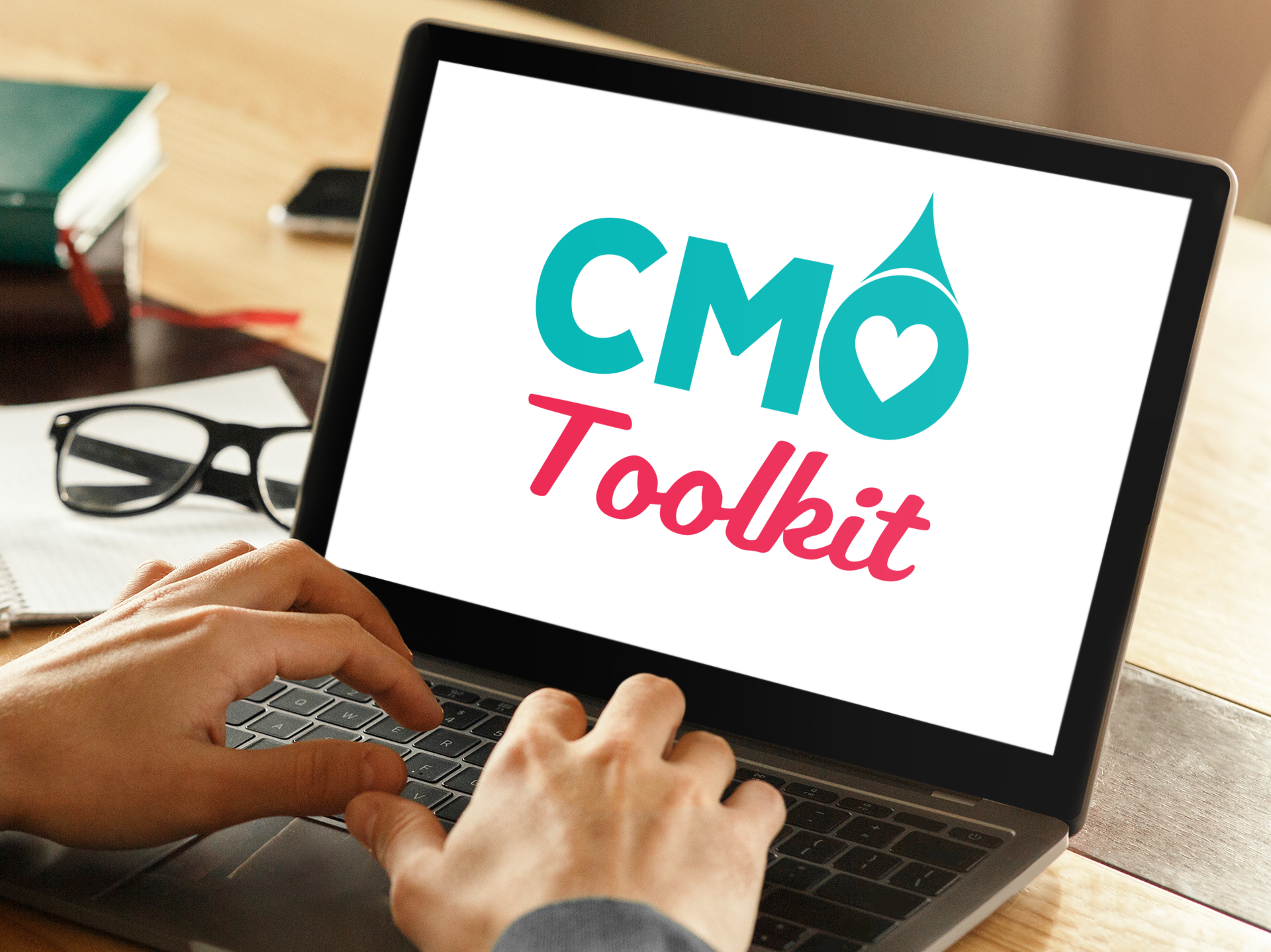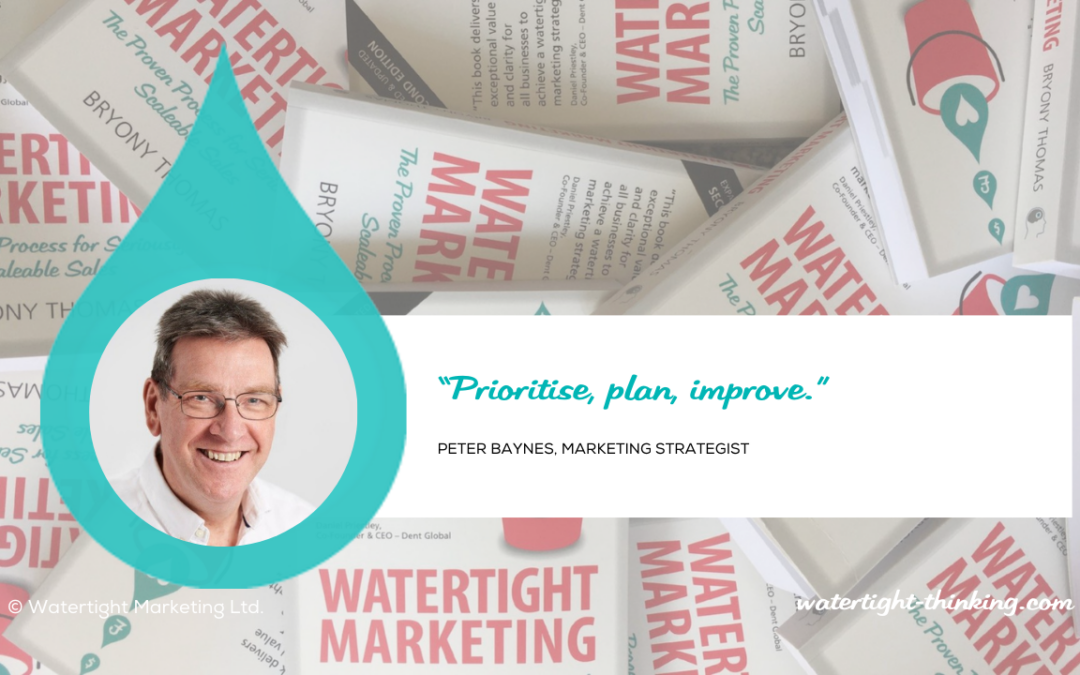Reading Time: 10 Minutes
We talked to Peter Baynes, marketing consultant and a Watertight Practitioner about his experience of working with, using and applying Watertight Thinking. Interview by Rachael Wheatley, Watertight Business Thinking.
Rachael Wheatley: Thank you for joining me, Peter. It’s a real pleasure to speak to you. To introduce you, you’re a marketer with many years’ experience both working in-house and as a consultant. Let’s start with a question about how Watertight changed your approach to marketing.
Peter Baynes: It was quite life-changing. I finally came across someone in Bryony Thomas who had captured how I saw marketing and presented it in a new, very usable and simple framework. I had been talking about very similar things before I discovered Watertight Marketing so it’s brilliant to have these all laid out in a way that makes it accessible for marketers and business leaders as well as useful for me as a consultant. For instance, I’ve always said marketing has to be always on – not just campaigns – and this is neatly encapsulated in Watertight’s baseline marketing plan.
Rachael Wheatley: What in particular resonated from the book?
Peter Baynes: The fact that it covered the whole customer journey and that you are encouraged to first consider your current customers, making sure your bucket (your existing business and customers) isn’t leaking. Even when I was working on lead generation, I said, let’s start with your customer base. There are referrals and old customers who have moved company – these are the places to start before you generate leads from people who don’t know you.
Rachael Wheatley: In terms of your consultancy work, and when you’ve been a part-time outsourced marketing director for those clients, how have you applied the thinking or frameworks?
Peter Baynes: Often the initial engagement involves using one of the frameworks and taking a client through that. It might be that the company needs a baseline activity plan and we’ll start off by running a diagnosis using the Touchpoint Leak Assessment and prioritising what marketing they need to put in place first. For one client what emerged was that they were good with existing clients so the activity we needed was skewed towards increasing awareness and putting in place content that would pique prospects’ interest. They also didn’t have any funnels or filters in place to support their sales people so that’s what we also worked on.
I presented to the UK team recently of one client, and there were quite a few new people because they’d expanded since I first started work with them. I started off by taking them through the Watertight concepts, the buckets, funnels and taps and that everyone is involved in marketing before showing them the baseline marketing plan we’d put together.
When I look at what I’ve done with another client, I’ve been involved in plugging almost every Leak, from customer surveys and user group meetings, to branding guidelines, creating gateway products, helping them to produce testimonials and customer stories. That’s all from an initial engagement mapping out their customer journey and seeing where their gaps were.
Rachael Wheatley: So, the Touchpoint Leak Assessment or Foundations Audit are both really useful starting points to benchmark where a company is now and diagnose where the gaps are.
Peter Baynes: Yes, they are. I’ve also often used the need to build a baseline marketing plan and having marketing always on as a starting point. I’m usually helping companies to build operations, systems and processes to support that baseline plan, but also look at how to improve and become more consistent. Doing that means you need to show metrics and outcomes as well.
Rachael Wheatley: What challenges or problems do you think Watertight helps to solve?
Peter Baynes: Two things. Firstly as a practicing consultant or outsourced marketing director, you’re trying to build a business’s marketing capability. Watertight gives me the framework to plan and prioritise what we need to focus on to build that capability. Secondly, it gives me the language and tools to be able to communicate to the wider business and share with them what I’m doing in a way that means something to them.
Rachael Wheatley: One of the things we hear from senior marketers is that they know this stuff and they don’t feel they need Watertight. What would you say it enables or equips you to do?
Peter Baynes: It enables communication to people who are not so involved in marketing to explain why their input is useful and that they do play a role in marketing. And communicating upwards to decision-makers or budget holders why I think this should be a priority or this should be the plan.
Watertight Marketing, for me, mapped exactly to how I approach marketing, clarified and enhanced it, gave me the tools to engage with companies and vocalise or illustrate that approach.
Rachael Wheatley: That goes back to what you said earlier about how Watertight aligned to your thinking and expressed it in a way that made it really useful to use.
What impact do you think it’s had on the businesses that you’ve worked for?
Peter Baynes: I would say huge. Through my work with them, using Watertight, they’ve been able to do the right marketing, prioritise. They’ve been able to build an always-on marketing operation with any campaigns on top of that. Through that they have a sound pipeline of marketing qualified leads, knowing that they will be topped up regularly. They make better decisions and it’s helped me to put in place meaningful metrics for them to show their prospects are progressing through a buying journey.
Rachael Wheatley: Why would you recommend Watertight to others?
Peter Baynes: Because it works! Properly applied. It’s not a quick fix. It gives you the tools to prioritise and plan. And it gives you the framework for continuous improvement as well and helps to put in place a justifiable financial budget along with proper measurement.
Rachael Wheatley: So, a holistic methodology, then?
Peter Baynes: Yes. Whether or not you’re a consultant, you have a resource and tools to use, a language that everyone in the business is speaking, a methodology that helps you filter out all the noise about marketing and make better decisions. A good example of that is the recent rise of AI. Of course it means change and a whole new suite of marketing tools to use. What Watertight provides is a lens through which to look at any new tool to decide whether to use it and if so, how.
Rachael Wheatley: Anything else to add?
Peter Baynes: It always gets a good reception. The analogies and metaphors work well. It’s eminently adaptable so you can use what you need and find out what’s going to be most valuable and land best in any business you’re working with. As marketers, we draw on the best ideas and want to use the best tools. Watertight is definitely included in both of those things!

Subscribe to the CMO Toolkit
Would you like to get your hands on the tools, frameworks, templates, workshop packs, slides, and analysis tools we use with our clients? It’s all waiting for you.


